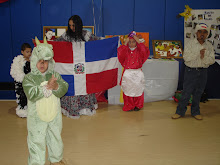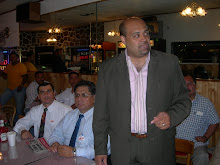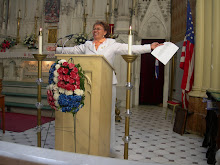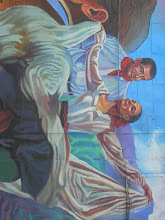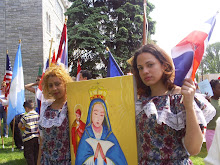Dominicanos
DOMINICANS
• Over 9 of every 10 Dominicans
and Central Americans spoke a
language other than English at
home, the highest rate among
Hispanic groups.
DOMINICANS
• The proportion who had attained
at least a bachelor’s degree varied
considerably: 11 percent of both Other
Hispanics and Dominicans,
DOMINICANS
• The gender gap in labor force
participation rates was larger in
the Hispanic population than in
the total population (a 16 percentage-
point difference compared
with a 13 percentage-point
difference). while Other Hispanics, Puerto
Ricans, and Dominicans had the
smallest gap (about 11 percentage
points each).9
HISPANICS IN GENERAL
Proportionately more
Hispanic women than
Hispanic men held
managerial or
professional jobs.
DOMINICANS
Median family income : $28,700 for
Dominicans.
DOMINICANS
People from the Dominican Republic have massively moved out of their home country in search of a better life in North America. Dominican immigrant settlements in America date from the mid-1960s. The size of this community in the United States grew tremendously in the 1970s and 1980s. There is 65% of Dominicans living as permanent residents in the state of New York (Torres-Saillant & Hernandez, 1998).
DOMINICANS
Between 1961 and 1986 more than 400,000 people legally immigrated to the United States from the Dominican Republic, and another 44,000 moved to Puerto Rico, while thousands more entered both places illegally. More than 300,000 Dominican lived in New York City by 1990, and the total was expected to reach 700,000 early in the millennium, making Dominican migration one of the largest to this country of the past forty years. Dominicans went largely unnoticed at first.
DOMINICANS
They proved more adept at business enterprise, launching thousands of bodegas, supermarkets, and consumer goods stores in New York City, just as Cubans were doing in Miami. Manhattan’s Washington Height became their El Barrio and their Little Havana
DOMINICANS
the good news is that second-generation Dominicans have achieved considerably higher levels of education and secured better jobs than their foreign-born elders (Castro & Boswell, 2002).
DOMINICANS
From 1988 to 1998, a total of 401,646 Dominicans were admitted to the United States. This figure is almost twice the total admitted from any other country in the Caribbean (Castro & Boswell, 2002).
Dominicans in Philadelphia
Dominicans
Population: 4,337 estimated by the Census 2000
DOMINICANS
As of 2000, Philadelphia had the 14th largest Dominican population in the United States
DOMINICANS
Where they are living: Dominicans are settling largely in North Philadelphia amongst the Puerto Rican community. There are also small numbers of Dominicans settling in West Philadelphia and the Northeast.
DOMINICANS
Prior to 1990, there were very small numbers of Dominicans living in Philadelphia. After 1990, the Dominican community experiences rapid growth as large numbers of Dominicans move to Philadelphia from New York seeking work, affordable housing, and safer neighborhoods
DOMINICANS
Dominicans create an enclave during the 1990s and open bodegas, travel agencies, money houses and other businesses in North Philadelphia and other parts of the city.
DOMINICANS
The community continues to grow as relatives from the Dominican Republic move to reunite with family members in Philadelphia and others come seeking economic opportunities, higher education.
Monday, May 11, 2009
Subscribe to:
Comments (Atom)









